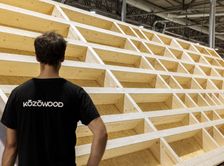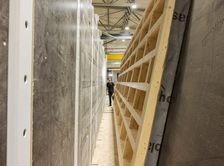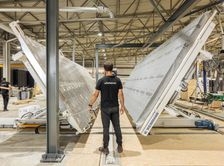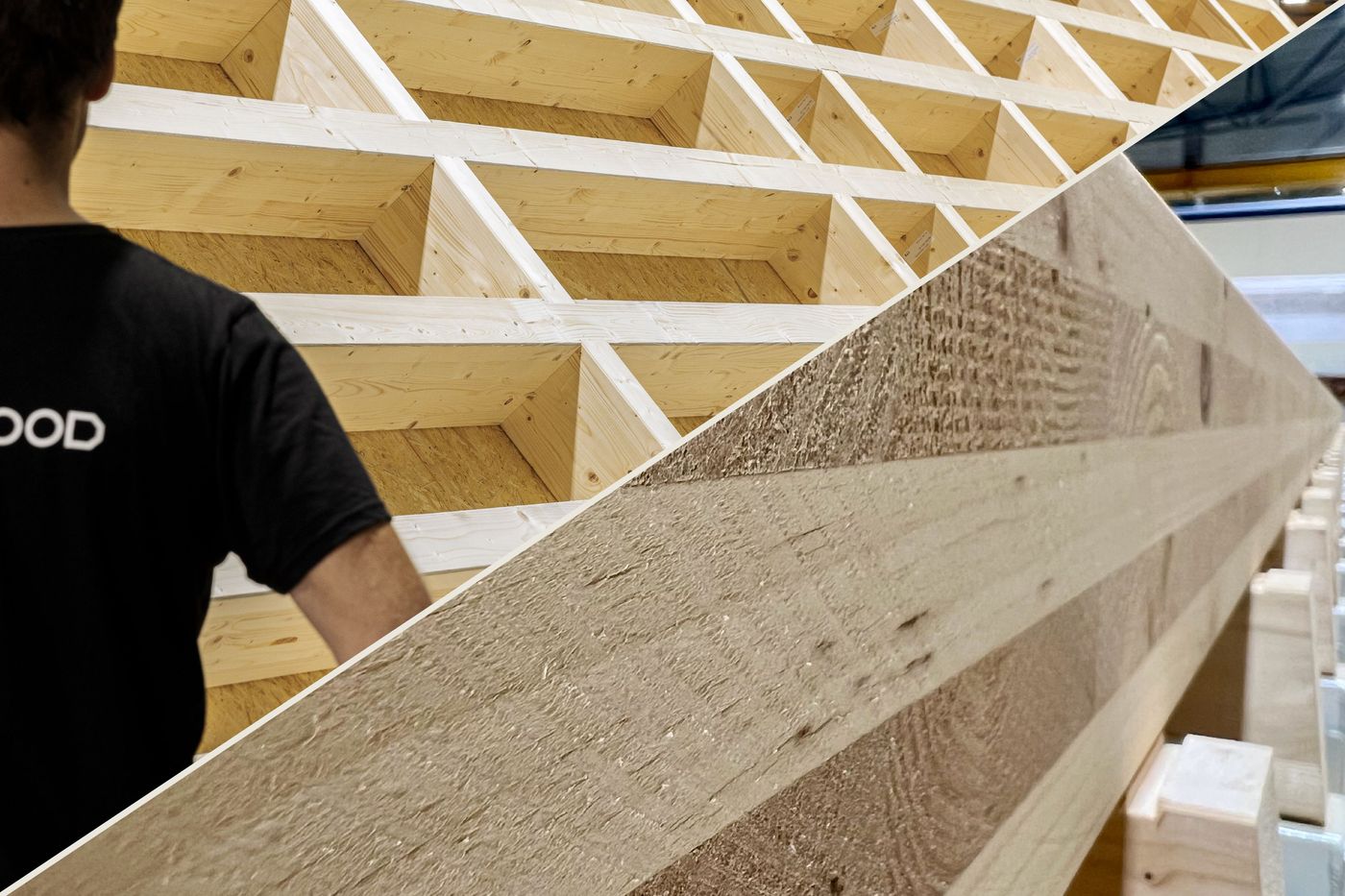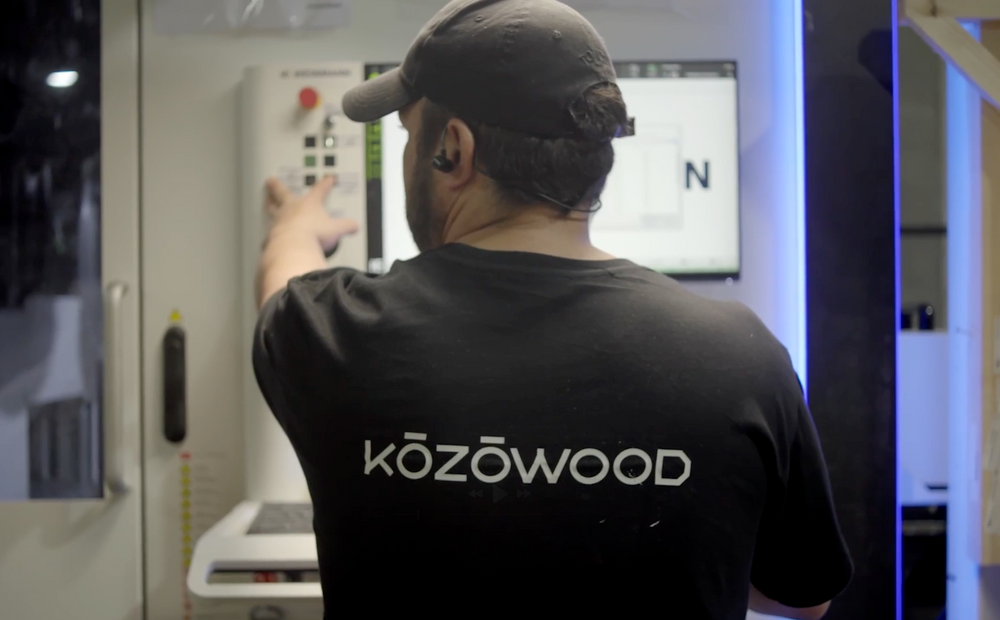(01)
Introduction
CLT and Timber Frame are not just alternatives to traditional construction methods. They represent a paradigm shift towards sustainability and better environmental management. Produced using renewable sources, these construction methods generate minimal waste during manufacturing, resulting in a substantially lower environmental footprint.
One of the most important characteristics of CLT and Timber Frame to highlight is their robustness. These structures are designed to be durable, providing splendid seismic and fire resistance. Furthermore, concerning project flexibility, CLT and Wood Frame offer architects and construction professionals a high degree of freedom, allowing for the realization of aesthetically appealing structures without compromising their robustness.
At Kozowood, we are constantly investing in sustainable innovation. Our use of CLT and Timber Frame is a testament to this dedication. By building with these techniques, we are not only creating exceptional and long-lasting structures but also contributing to carbon sequestration and reducing CO2 emissions.
Considering all the benefits of CLT and Timber Frame, one might assume that these advantages come at a high price. Cost is an important factor in any construction project; however, it can be stated that construction using CLT and Timber Frame is not only the most environmentally friendly solution but also competitively priced when compared to traditional construction methods.
(02)
CLT
What is CLT?
A common question people make is "what does CLT stand for?". CLT stands for cross-laminated timber, and is a construction technique of wood panels manufactured from solid sawn timber (wood cut from a single trunk). The Cross Laminated Timber panels are created by gluing layers of wood on top of each other, with a minimum of 3 layers and increasing this number in odd quantities. These layers are placed at right angles, improving the panel's strength and stability, considering its dimension. The cross-lamination method evenly distributes loads throughout the panel, making CLT robust and reliable as a building material.
CLT panels are versatile with a wide range of applications, such as walls, floors, roofs, furniture, among others. This construction method provides great design freedom, meaning architects and builders have the ability to create robust and functional structures without compromising design flexibility. Cross-lamination enhances the structural properties of the panels by distributing force along the wood fibers in both directions, making it as robust and reliable a system as any other conventional material like concrete and steel. Because they are factory-made and precisely machined off-site, CLT panels can be transported and directly assembled on-site with pre-installed electrical and hydraulic systems, optimizing construction time.
One major advantage of Mass Timber is its ecological qualities. Since wood is a renewable resource, it is more environmentally friendly than many other construction materials. The manufacturing process of a CLT panel is relatively clean, resulting in a low amount of waste produced during its production, and any waste generated can be reused or recycled at the end of its useful life. Additionally, CLT helps capture carbon from the air, reducing CO2 levels in our atmosphere. This makes it a sustainable option for the construction sector, aligning with Kozowood's dedication to caring for our planet, working and innovating day by day for a more sustainable future.
In summary, CLT is a remarkable step forward in sustainable construction methods. Its resilience, adaptability, and environmental benefits set it apart from traditional construction techniques.
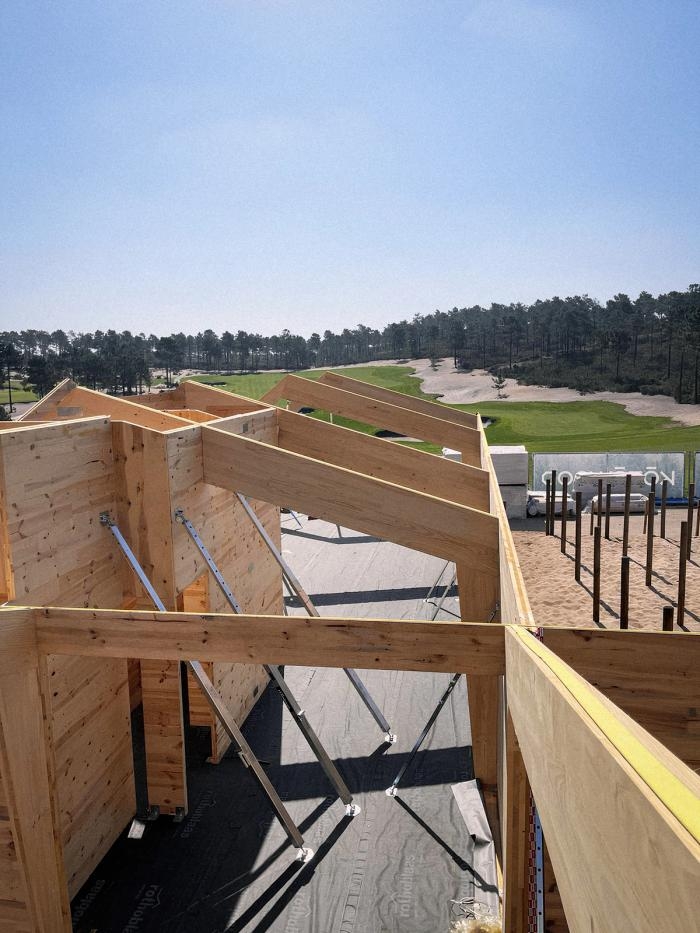
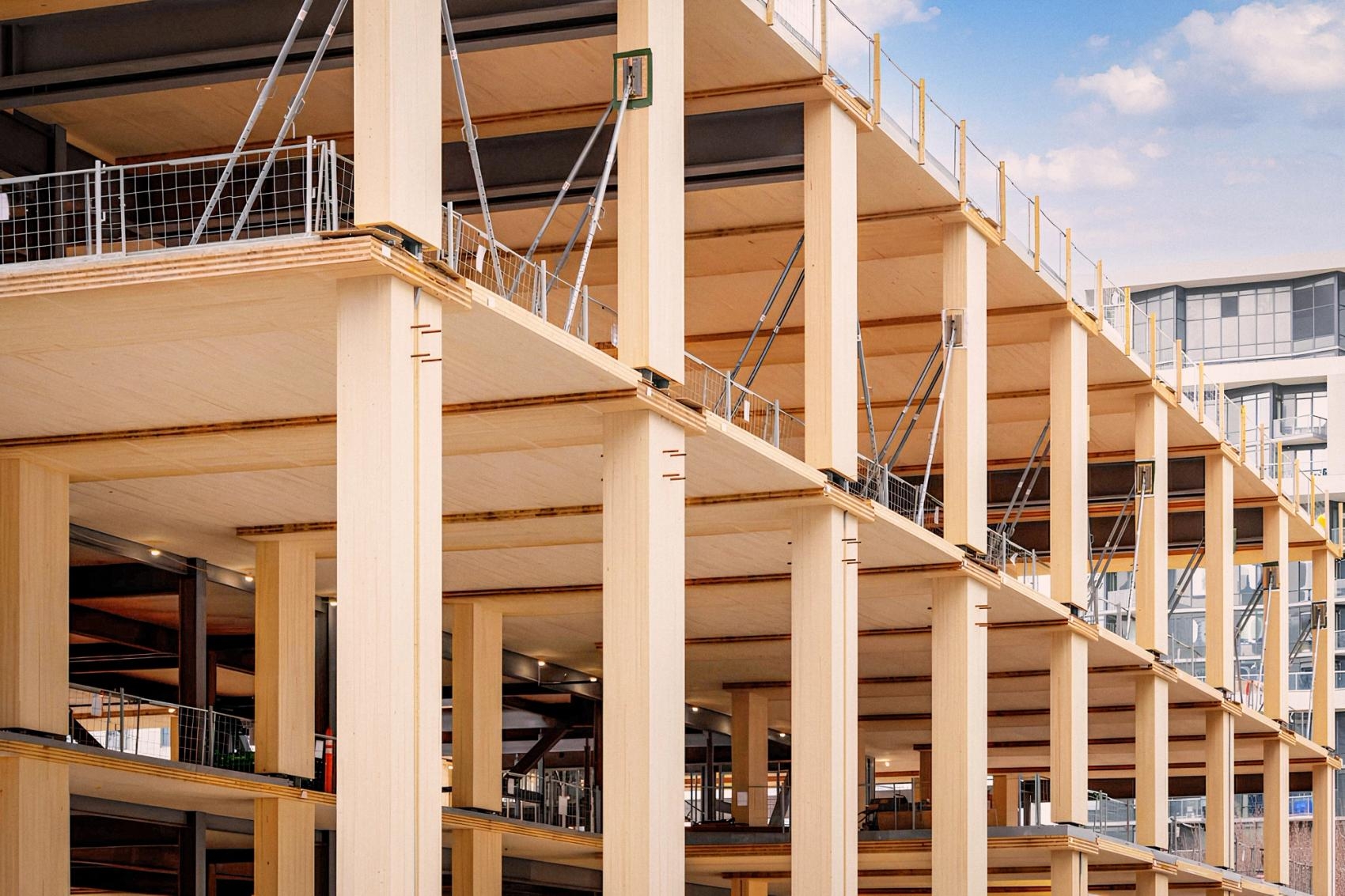
Kozowood
Image by Kozowood Industries
(03)
Timber Frame
What is Timber Frame?
Timber Frame is a construction technique traditionally recognized for its thermal and acoustic efficiency, as well as its sustainability. This construction method uses large pieces of wood precision-placed together, typically fastened with large wooden dowels. This method results in durable structures with great design flexibility, allowing for various architectural styles. Timber Frame is typically used for designing residential buildings, particularly single-family homes and low-rise multi-family buildings.
Contrary to popular belief, Timber Frame buildings also offer remarkable fire resistance. In the event of a fire, the outer layer of wood chars to create a barrier that slows down the combustion process, preserving the building's structure. One of the most attractive features of Timber Frame construction is the design freedom it allows. Timber Frame uses solid structural timber (KVH), allowing for maximum wood utilization and ecological sustainability as waste is minimized. Wood adapts to different architectural styles, from classic to modern, enabling designers and architects to expand their creativity in designing functional and visually appealing buildings.
At Kozowood, we believe that the future of construction lies in sustainable and environmentally friendly methodologies, which align perfectly with Timber Frame. Timber is renewable, reducing the carbon footprint compared to traditionally used construction materials.
Timber Frame brings a wide range of advantages, including strength, resilience, design flexibility, thermal and acoustic capability, and perhaps its most valuable advantage: minimal environmental impact.
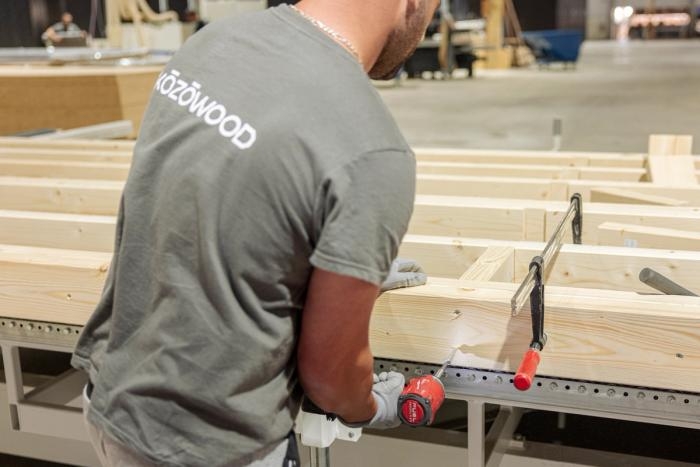
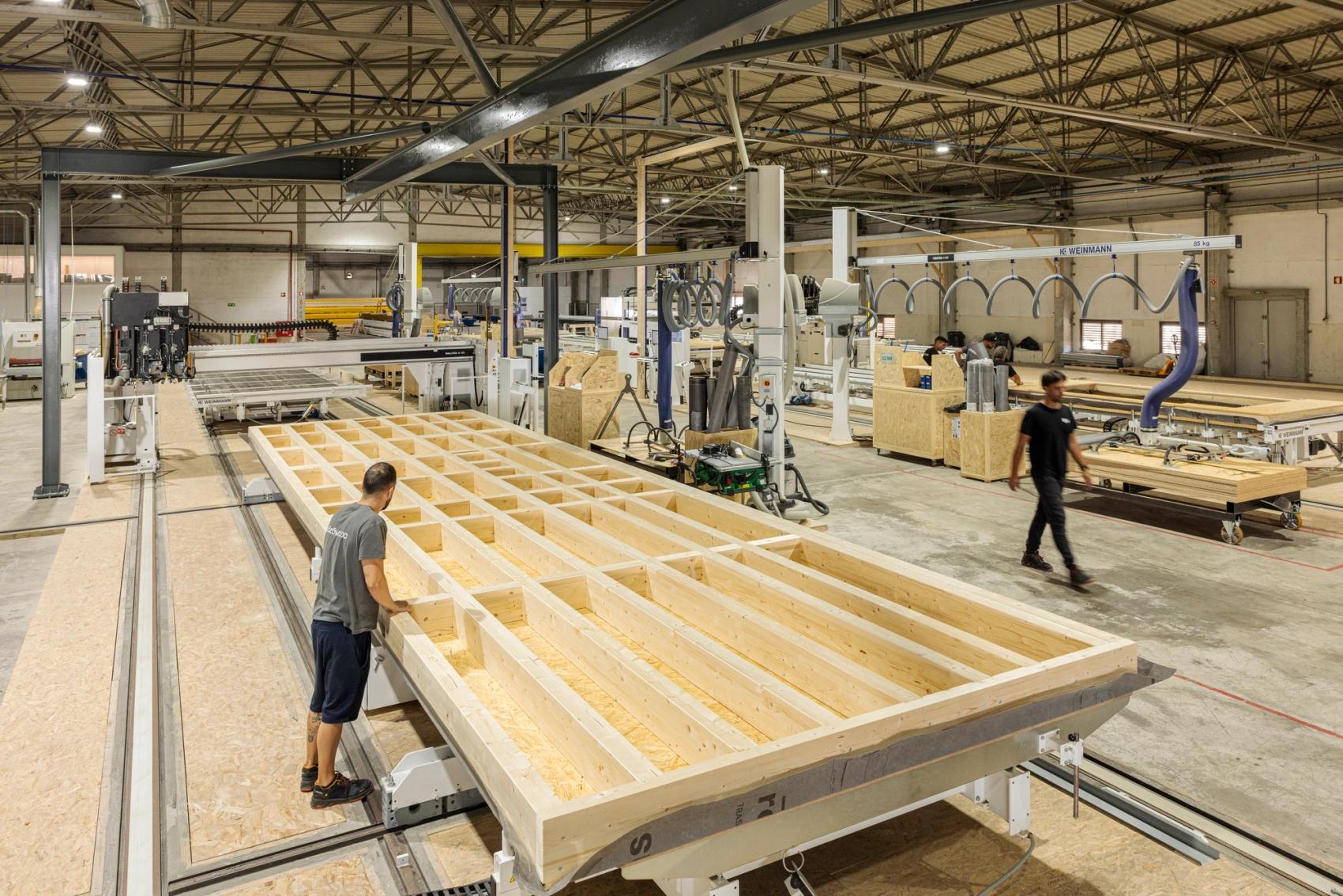
(04)
CLT vs Timber Frame
Main Differences: CLT and Timber Frame
Superficially, CLT and Timber Frame are both innovative and sustainable construction methods that use wood as the main material; however, they can differ in several fundamental aspects, as we will see next:
- Different Assembly Process: CLT consists of layers of wood stacked and glued perpendicular to each other, forming panels that are pre-cut and transported to the installation site. On the other hand, Timber Frame uses a wooden frame as a structure filled with insulation and sealed with bracing, which is then assembled on-site as walls, floors, or roofs, depending on their intended purpose designed in the factory.
- Different Material Requirements: The materials needed for creating a panel also differ; in the case of Mass Timber, the panel is entirely made of solid wood, which consequently requires a larger quantity of wood. On the other hand, Timber Frame combines its wood components with other materials, such as insulation and bracing, thus reducing the wood usage.
- Design Flexibility: Both systems offer design flexibility; however, CLT, being a more solid and robust material compared to Timber Frame, can support heavier loads and the construction of larger areas.
- Differences in Insulation: Timber Frame has the ability to accommodate insulation within its structure, which is not the case with CLT due to it being solid wood. Consequently, Timber Frame provides superior thermal insulation performance compared to Mass Timber.
In summary, although both use wood, CLT and Timber Frame differ in construction, material design, and insulation. Each offers distinct advantages.
(05)
Structure and Construction Method
CLT: Structure and Construction Method
A CLT panel is constructed by gluing several layers of solid sawn wood together. The manufacturing process typically involves nine stages. After receiving the sawn wood with the ideal moisture content (12% humidity) and placing it on the machine line, the first phase of the process begins, during which the wood is all placed in the same direction, and all its physical characteristics are analyzed by lasers.
The second phase follows, where the machine, using X-ray equipment and artificial intelligence, selects the wood according to the defined quality grade, depending on the intended use of the panel.
After this process, the third phase begins, where the machine creates "teeth," often referred to as finger joints, at both ends of the cut lamellas. Then, the finger joints are glued together, joining the lamellas.
Once joined and stored, the lamellas move to the fourth phase, where their four faces are smoothed.
In the fifth phase, the transverse and longitudinal lamellas are separated into different lines, preparing them for assembly.
The sixth phase starts with the joining of longitudinal and transverse lamellas in layers, bonded together with a melamine-based glue. A panel can be made with 3, 5, 7, or 9 layers, depending on the application and intended design. This cross-lamination process also helps evenly distribute loads throughout the panel, making CLT a robust and reliable building material.
After the layers are glued, the panel moves along the line to the press, where the seventh phase occurs. High-frequency waves are used simultaneously with the panel pressing process to activate the glue, resulting in better bonding between the panel layers and reinforcing its strength.
Finally, the panel enters the CNC machine, initiating the eighth phase, where the panel's edges are cut to the required dimensions. Openings such as doors, windows, sockets, switches, pipe passages, among other necessary machinations for the construction, can be machined at the same time.
The ninth phase is an optional step, typically involving panels used in applications where the wood is visible. In this process, the panel faces undergo fine sanding and receive finishing, protection, and painting if necessary to achieve a superior aesthetic finish.
Timber Frame: Structure and Construction Method
Timber Frame involves using wood to create a sturdy structure, which is then integrated to form walls, floors, and roofs.
The construction of a Timber Frame panel begins with cutting timber beams to the appropriate dimensions for the designed panel, using CNC machines. These beams are then assembled according to the design using screws. Next, the structure is filled with thermal and acoustic insulation.
This phase concludes with sealing the structure and insulating both sides with bracing. The panel design is completed with the application of breathable and vapor-permeable membranes.
(06)
Benefits of these construction methods
What are the benefits of these construction methods?
CLT and Timber Frame construction have many advantages. These new types of construction have become increasingly popular recently, and there are good reasons for that. They have many positive characteristics that set them apart from traditional construction methods. Here are some of the main advantages:
- Sustainable Choice: CLT and Timber Frame come from renewable sources, making them a sustainable choice for construction. This material generates minimal waste, resulting in a smaller ecological footprint compared to other construction methods.
- Faster Construction: Construction with Timber Frame and CLT is faster, especially when compared to traditional methods. One significant difference is that they are manufactured off-site, allowing for quicker assembly on-site. This prefabrication process significantly reduces construction time.
- Excellent Structural Robustness: Buildings using CLT and Timber Frame have high structural robustness, are highly resistant to earthquakes and fires, and have a temporal resistance equivalent to or greater than traditional construction methods.
- Energy Efficiency: Timber Frame and CLT buildings are highly energy-efficient, resulting in reduced heating and cooling costs for the property.
- Aesthetic Appeal: CLT and Timber Frame structures have a natural and welcoming appearance, contributing to an attractive visual appeal. They can offer beautiful aesthetics without compromising their robustness.
Learn more about Building with Kozowood.
